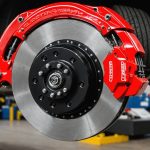Overview of UK Emissions Standards
Navigating through the UK emissions regulations is crucial for vehicle owners, particularly those with modified vehicles. It’s important not only to avoid penalties but also to ensure your vehicle’s roadworthiness. The UK’s emissions standards dictate limits on the pollutants a vehicle can emit, including CO2, nitrogen oxides, and particulate matter. The standards are established to mitigate environmental and public health impacts.
Vehicle compliance is mandatory, requiring modified vehicles to meet specific emissions criteria. Any modifications, whether performance-enhancing or aesthetic, must align with these regulations to prevent excess emissions. Compliance ensures that vehicles remain legally operable on UK roads.
Also to discover : Essential Tips for Safeguarding Your Vintage Car During the Harsh UK Winter Months
Understanding the emissions testing process is key to maintaining compliance. Tests measure the pollutants emitted under normal driving conditions to confirm adherence to set standards. Vehicles failing to meet these requirements need re-testing until they pass. It’s beneficial for vehicle owners to familiarize themselves with the testing procedures and the significance of regular checks. These steps ensure not only compliance but also contribute to a cleaner environment and promote sustainable driving practices.
Steps for Testing and Modifying Your Vehicle
Getting familiar with vehicle modification is essential in ensuring your car meets the UK’s emissions standards. It involves more than just tweaks to enhance performance; it means making sure that modifications align with regulations. Let’s explore how preparation, testing, and understanding procedures ensure compliance.
In parallel : How can technology assist in monitoring your vehicle’s health and performance?
Preparing Your Vehicle for Testing
Before diving into the emissions tests, ensure your vehicle is thoroughly prepared. Conduct a pre-test inspection to identify potential issues that could lead to failure. Key modifications, such as exhaust adjustments or engine tuning, must comply with emissions limits. These evaluations help identify and rectify problems before the official testing phase.
Conducting Emissions Tests
During the compliance steps, your car will undergo a series of emissions tests that evaluate its pollutant levels. Find certified testing facilities, equipped to assess your vehicle accurately. These tests simulate real-world driving conditions to gauge compliance with emissions standards.
Understanding the Testing Procedures
Understanding emission testing procedures is vital. Tests measure gases such as CO2 and nitrogen oxides to determine compliance. Familiarise yourself with these procedures and use diagnostic tools effectively to spot irregularities. Pre-tests ensure your vehicle meets standards before undergoing official evaluations, aiding in consistency with emissions regulations.
Impact of Modifications on Emissions
Exploring how vehicle modifications influence emissions levels is crucial in aligning performance with regulations. When you modify your vehicle, whether it’s upgrading the engine or adjusting the exhaust system, it could alter how much pollution your car produces. Hence, balancing performance modifications with emissions compliance becomes a necessary focus for vehicle owners.
Common Modifications Affecting Emissions
Several modifications can directly increase emissions levels. These often include alterations to the engine, turbochargers, and fuel systems. Each of these can increase performance but also heighten emission outputs, challenging the set regulations.
Balancing Performance With Compliance
Achieving a balance between performance and compliance requires strategic planning. Ensure any performance enhancements adhere to the UK emissions regulations and do not compromise roadworthiness. Engaging a professional to evaluate modifications can provide peace of mind.
Legal Implications of Non-Compliance
Failing to comply with regulations due to improper modifications can lead to significant legal consequences. Penalties can range from fines to the vehicle being deemed unroadworthy. Maintaining clear documentation of all modifications and their compliance with standards is essential to avoid such outcomes.
Necessary Paperwork and Inspections
Navigating the world of emissions paperwork and vehicle inspections can seem daunting. Yet, these components are crucial to ensuring ongoing vehicle compliance with UK emissions standards. Without proper documentation and inspections, vehicle owners risk significant penalties.
Essential Documentation for Modifications
Compiling the correct documentation requirements is key when modifying vehicles. Essential paperwork includes documentation of any changes made, emissions test results, and compliance certificates. These documents provide proof that your modifications adhere to UK emissions regulations and should be available upon request by regulatory bodies.
Guidelines for Inspections
Regular vehicle inspections ensure that modifications align with compliance standards. It’s important for owners to follow an inspection schedule, allowing for timely detection and rectification of issues. Engage with certified professionals familiar with emissions standards for accurate evaluations.
Keeping Records of Changes
Maintaining a comprehensive record of modifications helps streamline inspections and compliance checks. Detailed records include original and modified specifications, test results, and certificates. These records protect against potential disputes over compliance and assist during routine or surprise inspections, reducing hassle for vehicle owners.
Resources and Certification
Navigating the landscape of emissions certification and connecting with regulatory bodies is critical for vehicle owners aiming for full compliance with UK emissions standards. To achieve this, understanding the roles of key organizations and leveraging available resources ensures the process is manageable.
Official Bodies Overseeing Emissions: In the UK, several authoritative entities are responsible for enforcing emissions regulations. The Driver and Vehicle Standards Agency (DVSA) sets rules on vehicle testing and modifications, while the Department for Transport (DfT) provides overarching guidance on environmental compliance. Vehicle owners must familiarize themselves with these organizations to stay informed about updates and regulations.
Obtaining Necessary Certifications: Securing proper certification for modified vehicles involves passing emissions tests as validated by recognized facilities. Certification confirms the vehicle’s emissions outputs align with legal standards and ensures its roadworthiness. Owners should ensure that any modifications undergo thorough testing by certified technicians to avoid non-compliance risks.
Useful Resources: Numerous resources exist for vehicle owners needing compliance assistance. Websites, guides, and workshops offer insights and best practices for maintaining emissions standards. Engaging with these resources, along with keeping abreast of regulatory changes, can ease the certification process significantly.











